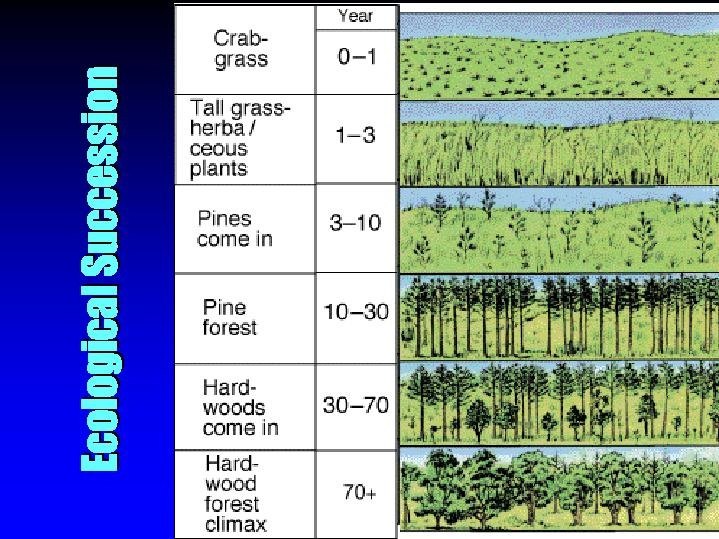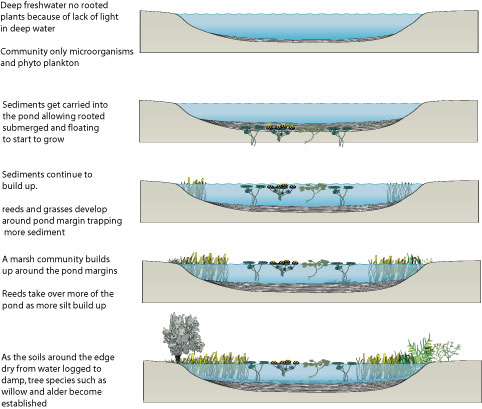From pioneer seedlings and saplings to transition forest to young growth forest to mature forest to old growth forest.
Bare forest to hardwood forest 5 stages of succession.
The rate of succession and the species present at various stages depend on the type and degrees of disturbance the environment of the particular sites and the species available to occupy the site.
Forest stands can natu rally include both early and late successional stag es.
Studying the changes in community structure biomass and diversity of different diameter at breast height dbh classes in subtropical mountainous forests during forest succession can provide data in support of.
Early successional habitat occurs in a forest after a disturbance such as a fallen tree wind or fire.
Learn vocabulary terms and more with flashcards games and other study tools.
Stages of forest succession grass or plant stage.
In time most sites will transition to one of several matrix forming forest types such as northern hardwood forest or spruce northern hardwood forest.
Desired results are often evident in as little as 5 years following planting.
The mineral soils are usually 25 cm deep and some stands occur on thin glacial till or bare granite.
In the piedmont of north carolina land subjected to disturbances will grow back in a century or two to become mixed hardwood forest.
Forest succession is considered a secondary succession in most field biology and forest ecology texts but also has its own particular vocabulary.
Start studying 5 steps of primary succession from bare rock to forests.
In the context of global warming the changes of forest structure diversity and productivity along with forest succession have always been a topic of interest for many researchers.
Currently forest land covers a third of the united states and is an important source of early succession al habitat for many species.
Forest succession forest cover types tend to change over time through the natural process of forest succession.
However planting trees can accelerate the natural progression or succession from field to forest or enrich a newly regenerating forest with an uncommon species.
The forest process follows a timeline of tree species replacement and in this order.
Following a major disturbance such as a fire or windstorm or a silvicultural treatment designed to create similar conditions pioneer species normally invades a site.
The planted area will begin to transform into a forest.









